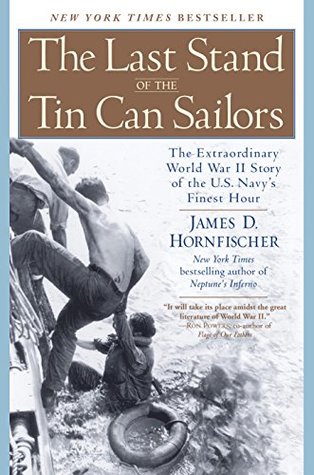More on this book
Community
Kindle Notes & Highlights
In war, events seldom cooperate with expectation.
They had come from small places to accomplish big things.
If battleships and carriers were corporations, with payrolls of thousands managed by a bevy of mid-level managers who wore the gold stripes of lieutenants and lieutenant commanders, destroyers and destroyer escorts were mom-and-pop shops.
The battle line, the preferred formation of admirals since 1655, when James, Duke of York, had routed the Dutch at the Battle of Lowestoft, endured for nearly three hundred years on the strength of its irreducible merits: it offered naval commanders both command unity and concentrated firepower.
For any naval officer, the dreamed-of scenario was to “cross the T” of his opponent, concentrating their full broadsides on approaching ships that could respond only with their forward batteries.
The destroyer’s zigzagging inbound course was not entirely random. Evans deliberately turned toward and steamed through the roiling cauldrons of the enemy’s misses. Known as “chasing shell splashes,” the tactic relied on the diligence of the Japanese gunners to correct their aim. Because they continuously adjusted their range and train, naval salvos were like proverbial lightning, seldom striking twice in the same place. If the Japanese had caught on to the game, they might have fired successive salvos to the same range and bearing. But they did not. They had their training too. And so the
...more
He knew that if the shells were fired at flat enough angles to the water, they need not actually “hit” a ship at all. A near miss that struck the water close aboard, continuing on an underwater path, could land the most devastating blow of all: a hit below the waterline.
“Anxieties,” wrote Alfred Thayer Mahan, “are the test and penalty of greatness.”
On the verge of victory, with the Samuel B. Roberts sinking and the Johnston dead in the water, Admiral Kurita loses his nerve and orders his ships to reassemble and withdraw. The threat to the U.S. beachhead in the Philippines ends.
Sprague had begun the battle expecting to make history as the commander of the first carriers ever destroyed by naval gunfire. Now he made history as the victor in the most unlikely win in U.S. naval history.
It has been written that so much of life is preparation, so much is routine, and so much is retrospect that the purest essence of anyone’s genius contracts itself to a precious few hours.
It was the Battle of Leyte Gulf’s penultimate chapter and the last large-scale engagement between opposing navies that the world would ever see.
With Leyte won, Manila would soon fall. The Navy moved on, preparing to land Marines on Japanese soil for the first time at Iwo Jima.
“this was Trafalgar; it was Tsushima and La Hogue and Aegospotami and Salamis and all the other utterly crushing victories, after which an entire war is changed.
it was the greatest naval battle ever fought for the distances it spanned, for the tonnage of ships sunk, for the duration of the duels between surface ships, and for the terrible losses of human life—some 13,000 sailors, airmen, and officers, including perhaps 10,000 on the Japanese side alone, and about 850 from Taffy 3.
The Battle off Samar was a battle of firsts: the first time a U.S. aircraft carrier was destroyed by surface gunfire; the first time a ship was sunk by a suicide plane; the first time the mightiest battleship afloat fired on enemy warships. And it was a battle of lasts: the last massed ship-versus-ship action in naval history; the last time a battleship fired its main batteries at an enemy; the last time small destroyers charged an opposing battle line.
According to Admiral Nimitz, “The history of the United States Navy records no more glorious two hours of resolution, sacrifice, and success.”
all thirteen ships of Task Unit 77.4.3 awarded a Presidential Unit Citation.
Ernest Evans was Taffy 3’s sole recipient of the Congressional Medal of Honor.
After the war Nimitz tried to quash official criticism of Admiral Halsey, fearing the public relations damage it might do to the Navy.
Adm. Ernest J. King, who was himself outraged by Halsey’s decision—he
Halsey radioed Nimitz, “It can be announced with assurance that the Japanese Navy has been beaten, routed, and broken by the Third and Seventh fleets.”
A problem that plagued the Japanese side throughout the battle was fundamental confusion about the nature of the enemy who opposed them.
But in 1982 the christening of an Oliver Hazard Perry-class frigate in Bob Copeland’s name helped show them the benefits of remembrance.
The USS Copeland (FFG-25) was commissioned on August 7, 1982.
USS Clifton Sprague (FFG-16),
USS Carr (FFG-52), was named for the Roberts’s heroic gunner’s mate.
“It sent a chill through me on the night of the mining, as we were fighting to save the ship, to see crew members passing the plaque and reaching out and touching it, not just one or two guys but seemingly everyone who passed it. Clearly they were bonding with the heroism of the past.”


